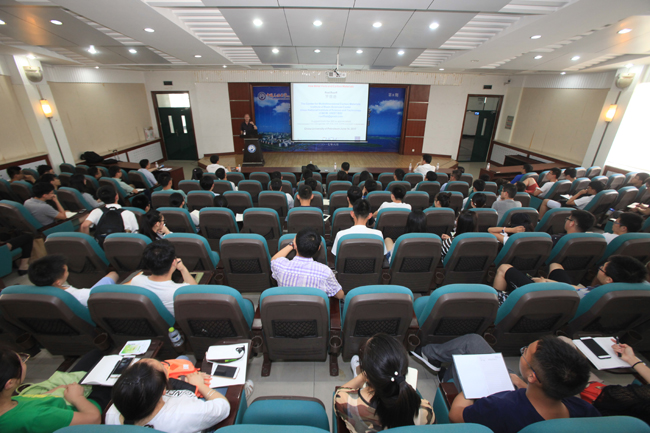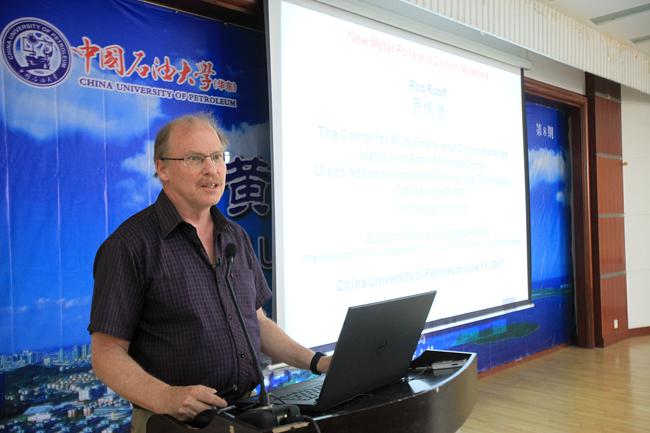On June 14, prof. Rodney S. Ruoff from Center for Multidimensional Carbon Materials of South Korea made visit to china university of petroleum and gave a lecture on New Metal Foils and Carbon Materials.

During the lecture, Prof. Ruoff gave a brief introduction of the research background and graphene based new carbon materials in energy and fuel area. Meanwhile, he showed us new research progress of the synthesis of high quality graphene and sp3-bonded carbon materials on new metal foils in his group.

New carbon materials with excellent properties have attracted much attention around the world. Over the past decade, graphene has developed rapidly as one of the most promising materials changing human life. As a kind of ultrathin sp3-bonded carbon films, “Bilayer diamond” (“diamane”) also has a promising application future. The development of facilely synthetic methodologies for the preparation of large-area ultrathinsp3-bonded carbon materials has always been an important challenge in the field of carbon materials. Prof. Ruoff’s Group is focusing on the synthesis of high quality graphene and sp3-bonded carbon materials on new metal foilsby chemical vapor deposition.
One method of growing graphene films that are more than one atomic layer thick is by chemical vapor deposition on metal substrates that have non-negligible carbon solubility. Prof. Ruoff introduced the research progress of synthetizing single crystal Cu (111) foil at large scale and the fabrication of Ni (111) & Co (0001) single crystal foils. Single crystal Cu (111) foil and Ni (111) & Co (0001) single crystal foils are appropriate candidates for high-quality graphene growth and easy graphene transfer. Based on this, Prof. Ruoff’s group put forward the feasibility of transferring graphene into ultrathin sp3-bonded carbon films on metal foils substrate.
Prof. Ruoff's group found that the synthesis of polymer precursor for sp3-bonded carbon materials was feasible. Chloroform was polymerized to form PHC (Poly(hydridocarbyne)) by coverting C-Cl to C-H using Samarium iodide (SmI2) in THF.PHC is expected to have a hyperbranched structure with only C-H and C-C bonds, which can synthetize sp3-bonded carbon films by thermolysis.
Editor: Bu Lingduo
Source: UPC News Center
Updatetime: 2017-06-19